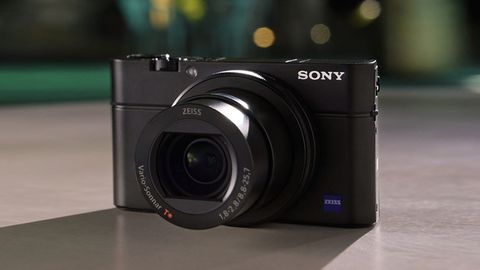Why you can trust TechRadar
The Sony RX100 is now in its third version, but all three are now on sale at the same time, which could be confusing. So here's our quick guide to the key differences between them:
Lens
RX100: 3.9x 28-100mm equivalent f/1.8-4.9 | RX100 II: 3.9x 28-100mm equivalent f/1.8-4.9 | RX100 III: 2.9x 24-70mm f/1.8-2.8
The original RX100 and the RX100 II that followed it have a 3.9x optical zoom lens with an equivalent focal range of 28-100mm. This gives them a very useful everyday zoom range, but the maximum aperture at full zoom is quite restricted at f/4.9. The RX100 III, however, has a new and different lens. It has a shorter, wider 2.9x zoom range equivalent to 24-70mm, but a maximum aperture of f/1.8-2.8. It doesn't go quite as long as the previous versions, but it goes a little wider and maintains a high maximum aperture all the way through the zoom range.
Sensor
RX100: 1-inch CMOS, 20.2Mp | RX100 II: 1-inch back-illuminated CMOS, 20.2Mp | RX100 III: 1-inch back-illuminated CMOS, 20.2MP
All three RX100 models have a 20.2-megapixel 1-inch CMOS sensor, but with the RX100 II Sony introduced a new 'back-illuminated' version. In this design, the sensor's electrical circuitry is placed on the back of the chip not the front. This leaves the photosites unobstructed, and Sony claims they now have 4x the light-gathering power.
Processor
RX100: BIONZ | RX100 II: BIONZ | RX100 III: BIONZ X
The RX100 I and II use a regular BIONZ processor, but the RX100 III has a more powerful BIONZ X processor which, amongst other things, increased the ISO range for the latest camera.
ISO range
RX100: ISO 125-6,400 | RX100 II: ISO 160-12,800 | RX100 III: ISO 125-25,600
The original RX100 has a decent enough ISO range for most purposes, but the new back-illuminated sensor in the RX100 II boosts the maximum ISO from 6,400 to a much more respectable 12,800. Thanks to its BIONZ X processor, the RX100 III can go higher still, to a maximum ISO of 25,600.
Rear display
RX100: 3-inch fixed, 1,228,800 dots | RX100 II: 3-inch tilting, 1,228,800 dots | RX100 III: 3-inch 180-degree tilting, 1,228,800 dots
There's been a gradual evolution of the rear LCD display on the RX100. The screen size and resolution has stayed the same, but where the screen is fixed on the RX100, the RX100 II adds a tilting mechanism for waist-level and high-angle viewing. The RX100 III takes it that little bit further, extending the tilt range to a full 180-degrees, so that you can see the screen from the front of the camera.
Viewfinder
RX100: No | RX100 II: Optional | RX100 III: Pop-up EVF
The screen on the back of the RX100 cameras is good, but there are still times when an electronic viewfinder would be useful. On the original RX100, that's not an option, but you can get an add-on EVF for the RX100 II. The RX100 III, however, has an EVF built in. It's a pop-up unit activated by a switch on the top of the camera – you then pull out the eyepiece a few millimetres for viewing.
Dimensions
RX100: 101.6mm x 58.1mm x 35.9mm, 213g | RX100 II: 101.6mm x 58.1mm x 35.9mm, 254g | RX 100 III: 101.6mm x 58.1mm x 38.3mm, 263g
Amazingly, despite its continued development, the height and width of the RX100's body has not changed through all three versions. The RX100 III has a slightly thicker body, but only by a couple of millimetres so you're hardly likely to notice the difference.
Current page: Sony RX100 vs RX100 II vs RX100 III
Prev Page Introduction and features Next Page Build and handling
